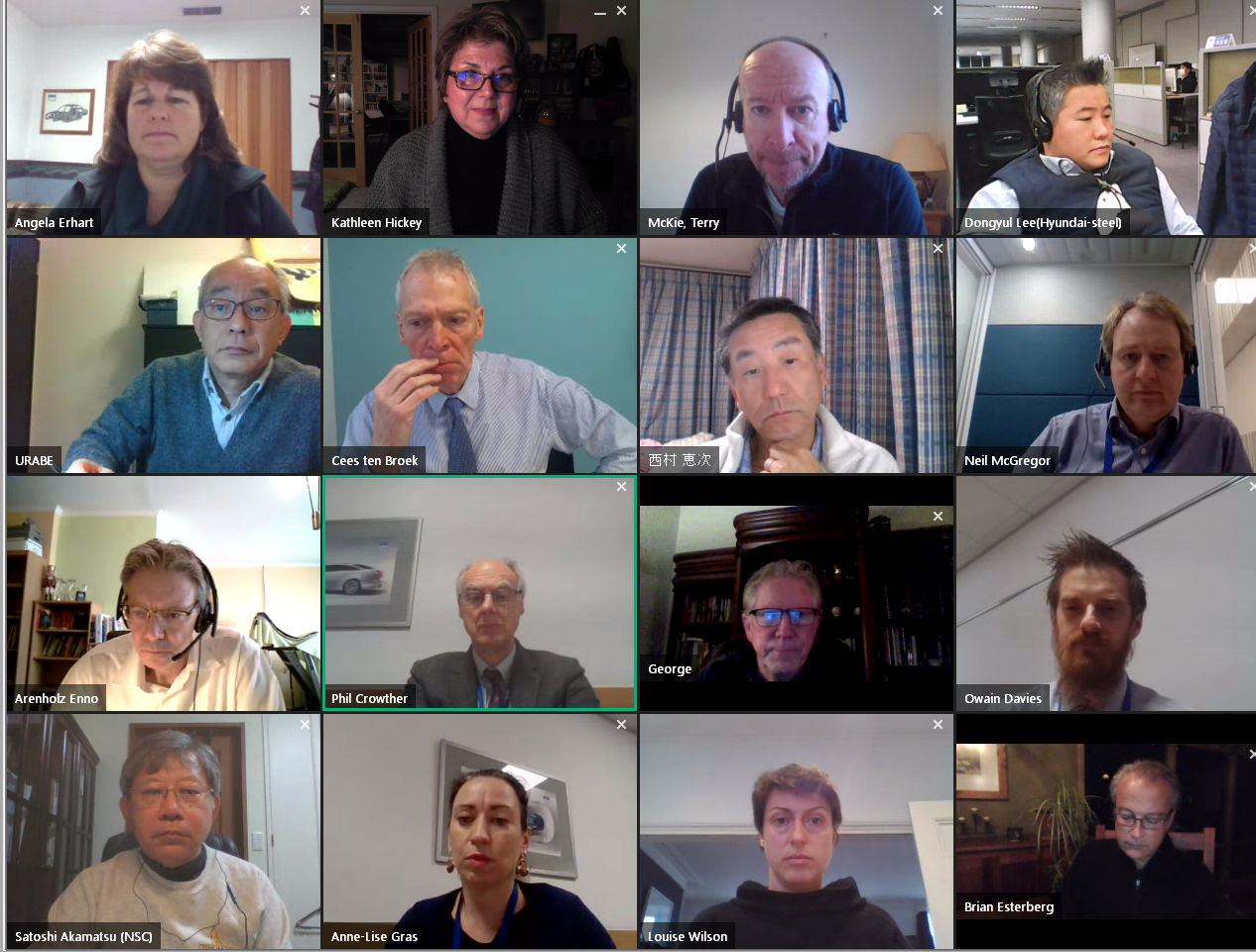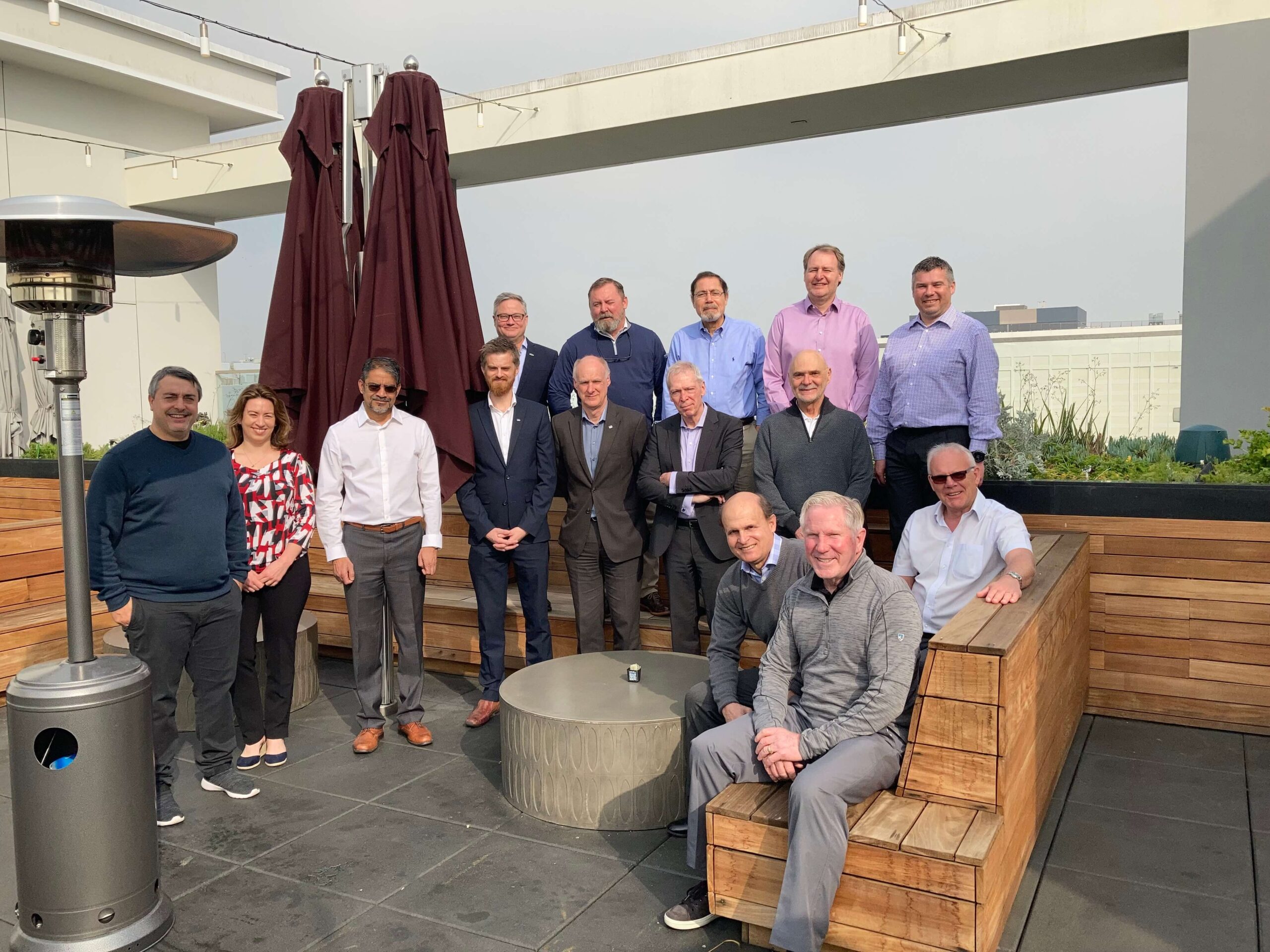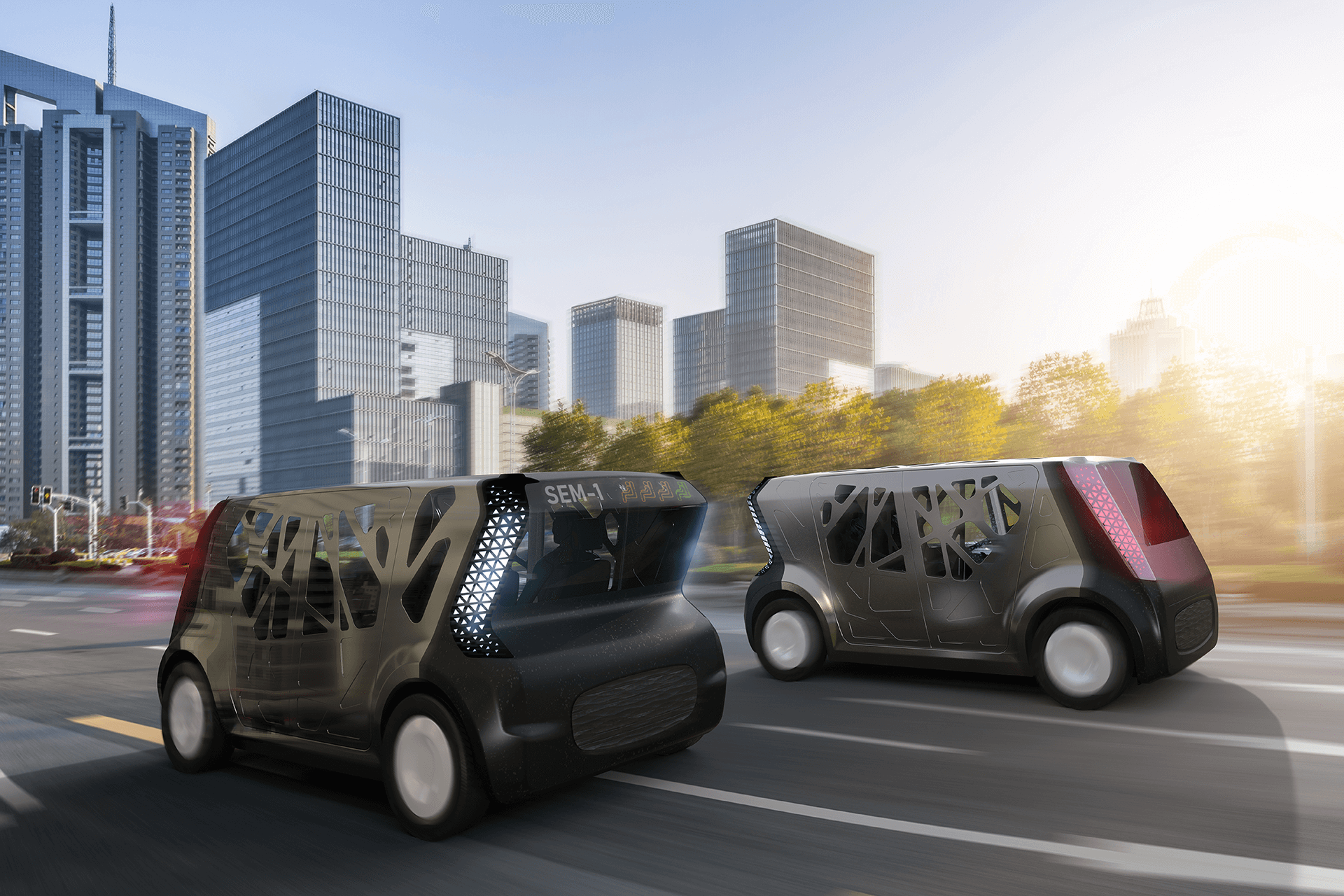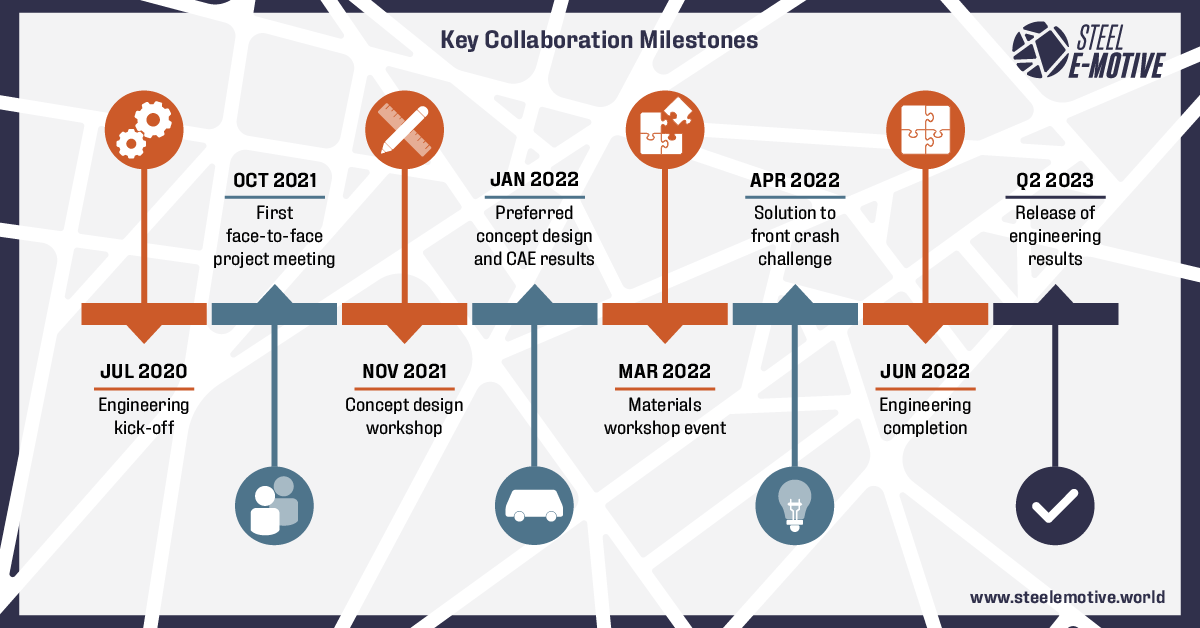Solving Global Mobility as a Service (MaaS) Challenges: A journey to demonstrate that steel is the solution
In June 2020, as the effects of the Coronavirus pandemic were becoming apparent, members of a global consortium on the brink of starting a future transport project were busy figuring out how that they would all work together under the changed circumstances. The WorldAutoSteel management team and a specialist engineering and auto design team from global engineering and environmental consulting firm Ricardo were busily reworking plans for the multi-organisational, technical program.
WorldAutoSteel had just launched a new 30-month multi-partner international engineering project intending to deliver unique vehicle architectures for mobility as a service and had chosen UK-based Ricardo to lead the engineering and design effort. Ricardo’s plan was to collaborate with the 18 global steel producers in face-to-face workshops. The Ricardo team successfully resolved the challenge of reworking the programme so that it could be delivered virtually without a significant change to the total timeframe of the project.
The project is Steel E-Motive, commissioned by WorldAutoSteel to demonstrate that steel’s extensive product and fabrication portfolio could solve the design and engineering challenges of mobility as a service (MaaS), so that fully autonomous and connected electric vehicles could be manufactured across the world using Advanced High-Strength Steels.
How COVID changed the MaaS project
Steel E-Motive Project Manager Anne-Lise Gras from Ricardo said that the initial plan had been to set the entire MaaS project up in a “war room” setting that was specifically designed for the programme: “We were going to isolate the team from the rest of the world and create a WorldAutoSteel world,” she explained, “ and then Covid kicked off, so a few months in, the whole expectation of how this project would run went out of the window. We had to change our way of working, but we managed to keep the time frames the same, give or take a few weeks.”
The Steel E-Motive programme was duly transformed into a project with virtual collaboration at its heart. A significant tranche of activity has been delivered through various lockdowns, with the global team using effective remote working techniques to collaborate. The group comprises WorldAutoSteel’s management team, subject matter experts from its 18 member companies, and Ricardo.

The Steel E-Motive team had to quickly adapt to remote working.
Steel E-Motive team exceeds expectations
Aside from the obvious challenges posed by Covid, as Ricardo’s project’s manager Anne-Lise also had another concern. Could she work alongside her capable associates in the management team at WorldAutoSteel to persuade 18 experienced and knowledgeable leaders from global steel companies to collaborate effectively with Ricardo on this unique MaaS project, and would they all have the appetite to work effectively together as a team on the engineering design aspects of the project?
She reflected on how she felt as Ricardo embarked on their part of the engineering design project: “I was very worried that it would be opinionated and that I would have 18 customers instead of one functioning team. I was concerned that every member would have their own satisfaction criteria. Of course, every member is different, and through the design work that we undertake, we need to cater to everyone, so we always keep that in mind. But I have been extremely surprised with how well the consortium is already working and how cohesive it is. It was easier than I expected to work together with a consortium of that size with that level of collective expertise.”
Steel E-Motive concepts
The Steel E-Motive team is running a complex international programme, leveraging strong working relationships and a community of like-minded individuals – all committed to delivering the best possible vehicles. Two mobility as a service vehicle concepts are being developed: a 4-passenger variant for intra-city use and a larger 6-passenger extra-urban variant to provide city-to-airport excursions and adaptability as a delivery vehicle. The project demonstrates the suitability of the latest Advanced High-Strength Steel (AHSS) grades and fabrication processes for use in a fully autonomous vehicle engineered for a MaaS transport model. The vehicles are conceptual and virtual, with no plans to go into manufacturing, but the level of validation could facilitate a future prototype build, depending on industry interest and feedback.
The power of high-quality team work
Dean Kanelos, Vice Chair at WorldAutoSteel and Market Development and Product Applications Manager at Nucor Corporation , says that the project to date has been defined by high-quality teamwork. He reflected that the value of collaboration in a project like Steel E-Motive could not be underestimated: “collaborative working is extremely important for this project. We need to get different perspectives on how to solve these mobility as a service problems. It’s not as simple as a small group of people or one region producing a mobility as a service solution because this must address the needs of the entire global industry. So, it’s really refreshing to hear suggestions from members around the world that put a little twist on things; if we didn’t see things from these different perspectives, we would not be able to capture the full breadth of what we are trying to accomplish through this project. We are getting different technical perspectives because everyone brings their own expertise to the table.”

The high level of teamwork has made the Steel E-Motive program possible
Face-to-face meetings also have been influential in the project. As soon as possible, the Steel E-Motive team took the opportunity to gather in person and continues to do so in locations around the world. For example, in March 2022, many team members had the chance to meet for the first time since the pandemic struck. Ricardo Project Manager Anne-Lise said it was a breakthrough moment, “We did it in Los Angeles because Pacific Coast time enabled engagement with Asian members who were not authorised for international travel. So, we held a session in the morning with on-site attendees, and then repeated this meeting agenda in the afternoon on a video call with the consortium members in Asia. It was the first time many consortium members could see each other in over two years. We made it clear that we really wanted their input; having this personal connection and pushing for their feedback created a different relationship than just doing it online. Even if we did have a good relationship already because of remote working, it then went to the next level.”
Throughout the MaaS vehicle project, team members have shared knowledge, explored, and learned about styling, crash performance and sustainability, and selected materials that uniquely solved performance requirements – working to incorporate regional trends, and making the product offering as impactful as possible.
Steel E-Motive team member shares his experience
WorldAutoSteel member POSCO, based in South Korea, is one of the 18 members actively collaborating on the Steel E-Motive project. Dr. Barney Jaehyun Kim is a Senior Researcher for the Materials Forming Research Group at POSCO’s Steel Solution Research Lab in South Korea. His role was to present opinions and to keep track of progress. He said: “I would describe the project as being pioneering – drawing a picture of mobility as a service transport solutions for an uncertain future. It was important to let many thoughts emerge from various perspectives rather than just one’s own biases.”
Barney could not attend a Steel E-Motive workshop in Munich last November in person. Still, he says it is his favourite example of the power of great collaboration on the project. “Body design issues were discussed in depth, and important decisions were made. At this meeting, the team arrived at a successful body design for the Steel E-Motive vehicles.”
Barney and his team played a crucial role in helping to problem solve during the MaaS project. He said:
“Although there were many difficulties, it was particularly difficult to ensure frontal crashworthiness with the very short overhang. To fulfil the requirements, we proposed various options, and Ricardo was able to deliver a solution that satisfies the goals of the project.”
The POSCO team ran a complimentary research project that contributed in several ways, including topology optimisation on the body structure design, analyses of solutions to reduce cost and mass while maintaining crash performance and a review of whether significant parts of the Steel E-Motive vehicle body could be manufactured by roll stamping, a new and innovative manufacturing method.
High quality collaboration creates a high quality end product
Barney and his team are just one example of 18 global steel companies contributing to this ground-breaking project, with the entire Steel E-Motive team operating with a shared set of values and behaviours that focus on trust, collaboration, learning, and development supported by good working practices and relationships.
Ricardo Chief Engineer on Steel E-Motive, Neil McGregor, is responsible for ensuring that the engineering aspect of the project and all the technical targets are delivered. He says that WorldAutoSteel has worked hard to build a consortium where everyone can work well together in a pre-competitive environment. Neil said that building trust has been important: “There are good levels of trust between all the steel companies in the consortium, even though they’re all competitors. All members can share their expertise and contribute to the project outcomes.”

18 global steel companies collaborated on the Steel E-Motive program to create a high quality end product
MaaS project benefits from team’s knowledge diversity
Neil reflected that the high level of teamwork meant that it was possible to access deep knowledge of steel technology and this, in turn, helped the project team solve some quite difficult technical challenges: “It’s the diversity of knowledge that’s been so important. You have WorldAutoSteel members and expert advisors who are very knowledgeable about the entire portfolio of steel grades and properties, and then you’ve got other members who are experts on steel welding, joining and fabrication. That’s where the sum of all the parts comes together, and that’s where I have learned the most and benefitted from this mobility as a service project.”
The Steel E-Motive project has been designed by WorldAutoSteel to create an environment that encourages participation. Participants report that it has been this approach combined with working with Ricardo, an engineering firm that was so willing to consider steel member expertise, which has made this program a success.
George Coates, WorldAutoSteel Technical Director and Steel E-Motive Program Manager said, “The integration of our member expertise with Ricardo’s engineering and design talent have achieved vehicle concepts that we’re extremely proud of and can only be realized with steel technology”.
He added that in the face of tough change, the program team was able to creatively adjust and work together towards a successful end: “We strove to create a virtual environment that was just as conducive to active participation as our in-person meetings had always been. Ricardo, in turn, was always receptive to our ideas and contributions, even though it might slow progress. Any viable solutions were quickly embraced. That openness for input was very important to tackle the challenges of this vehicle design with the best steel solutions.”
The Steel E-Motive team is continuing to work through 2022 on this project in the run-up to the launch of the final virtual concepts in 2023. Next year, all of the teamwork will pay off as these concepts are handed over to WorldAutoSteel members and shared with the world. Consortium members will then perform technical transfers with their customers, to inform them of how Advanced High-Strength Steel delivers – we want to show that when it comes to solving future mobility challenges and creating an excellent product, using steel ‘Makes It Real’. It’s expected that the engineering concepts embodied in the Steel E-Motive programme will be adopted or adapted for future autonomous vehicle designs.
Find out more
Steel E-Motive engineering and validation will be completed later this year, at which time the team will prepare to deliver design concepts and final results globally Stay on the Steel E-Motive journey with us as more engineering decisions and solutions will be revealed between now and the end of the year. To stay in touch with webinars, technical publications, and conferences where we will present final results information this year and next, be sure to subscribe.
Learn more about the Steel E-Motive vehicle design and keep up to date with news about the MaaS project.

Steel E-Motive project timeline
April 2020: Ricardo awarded WorldAutoSteel’s Future Mobility virtual vehicle development programme.
June 30, 2020: First Steel E-Motive Core Member Team meeting takes place.
September 30, 2020: Final vehicle specifications are solidified, and programme is named Steel E-Motive.
November 11, 2020: First press release announcement of the Steel E-Motive programme.
February 2021: First Steel E-Motive presentation at the U.S. Battery Electric Vehicle Architecture (BEVA) Symposium
October 2021: Presentation at the Precision Metalforming Automotive Parts Supplier Conference in Detroit
October 2021: Meeting of the global Life Cycle Assessment Core Team and first in-person meeting between WorldAutoSteel and Ricardo since programme inception.
November 2021: Munich Design Team Working Group meeting
November 30-December 4, 2021: Steel E-Motive Exterior Styling Revealed at Stuttgart Battery Show.
March 2022: Steel E-Motive Materials Working Group convenes in person for the first time in Los Angeles.
March 2022: Steel E-Motive Member Core Team Meeting first in-person meeting in Frankfurt Germany.
May 2022: Presentation at Great Designs in Steel conference, Detroit. Visit with IIHS Test Center in Virginia to share Steel E-Motive story, safety accomplishments.
June 2022: First in-person WorldAutoSteel plenary meeting since November 2019 convenes in Los Angeles.
June 30, 2022: Focus on design and grade optimisation, manufacturing feasibility, sustainability, and communication work streams.
2023 Q2: Release of engineering results.
Subscribe for updates
You might also be interested in
